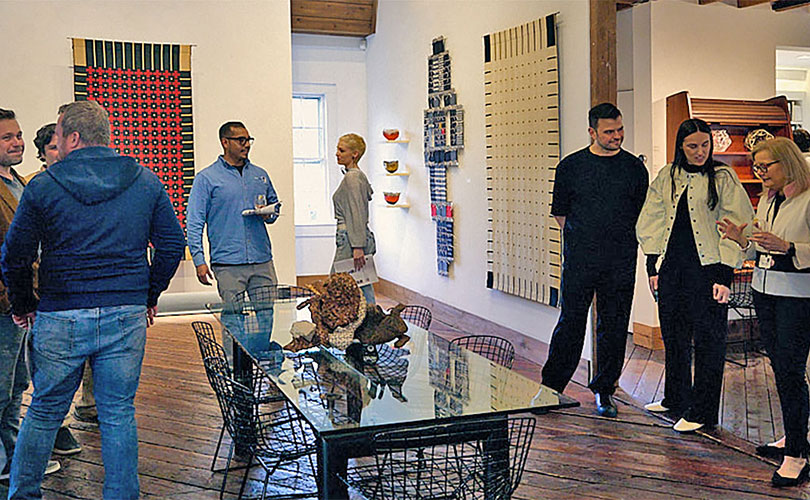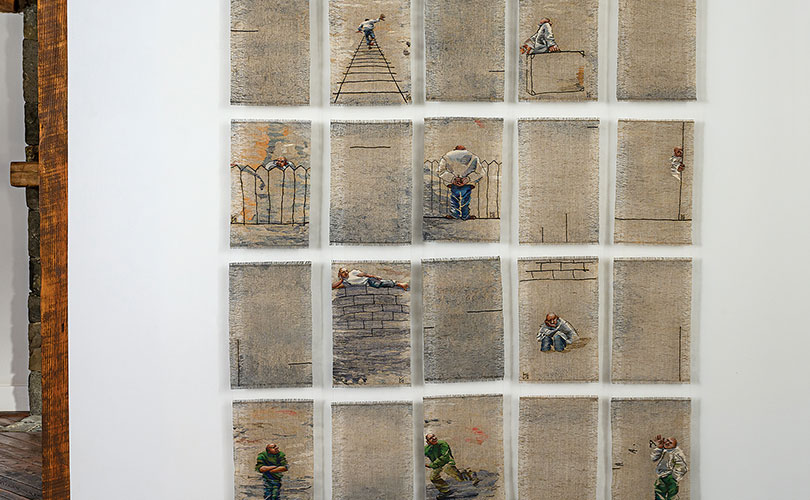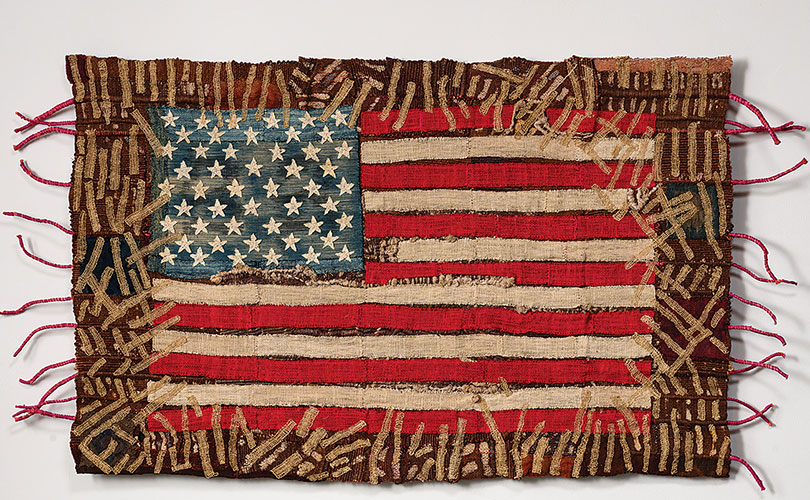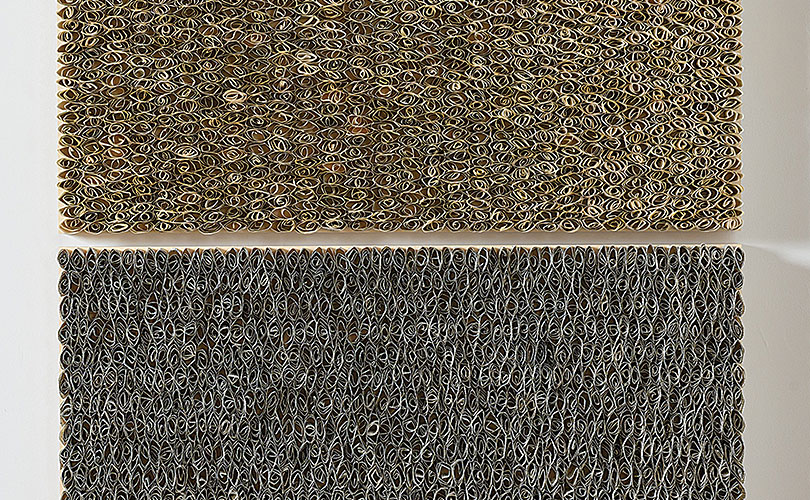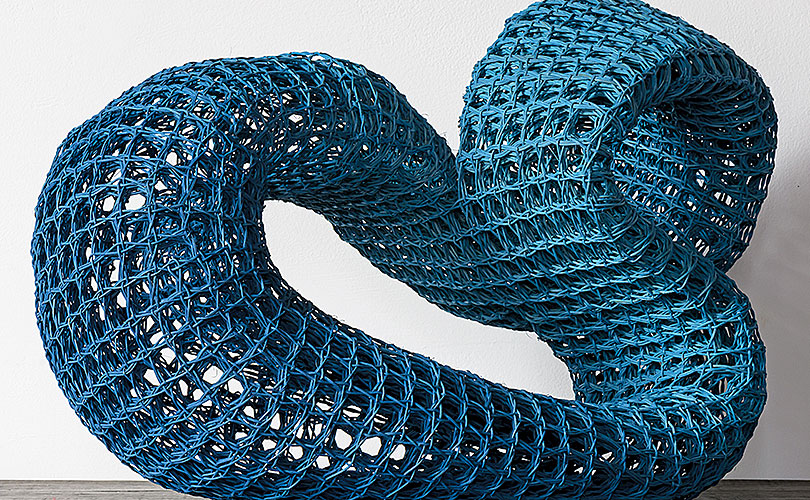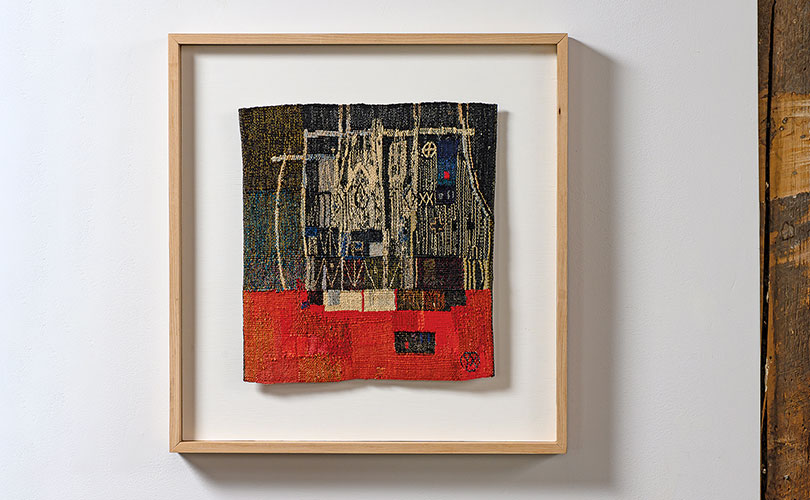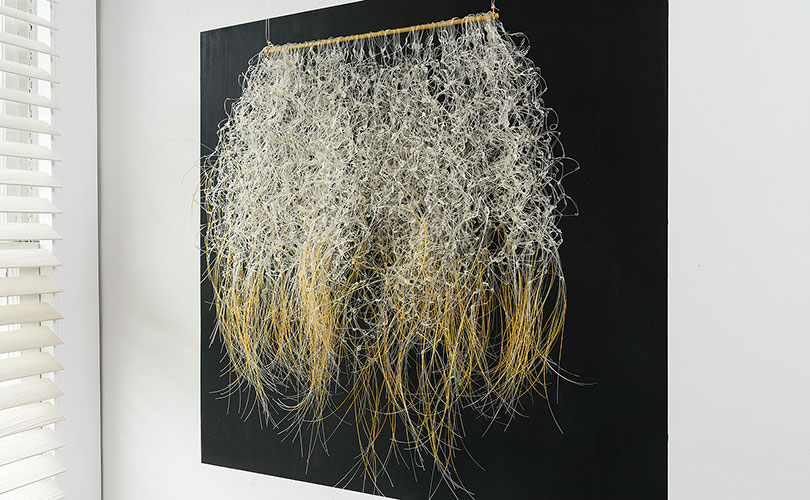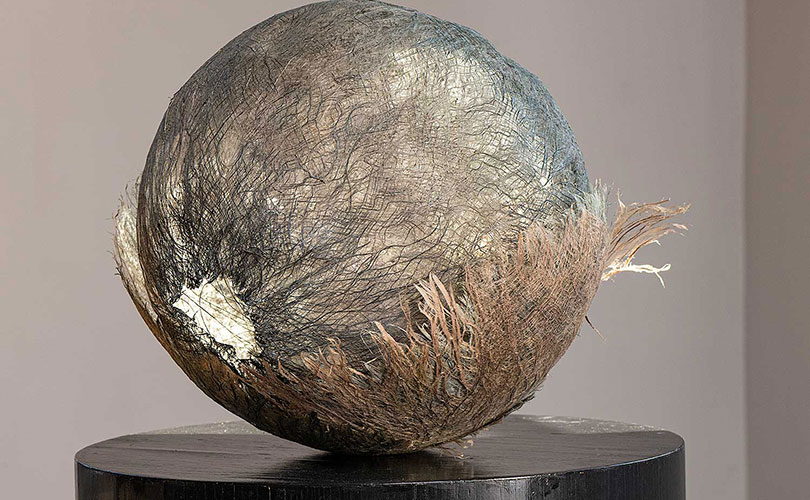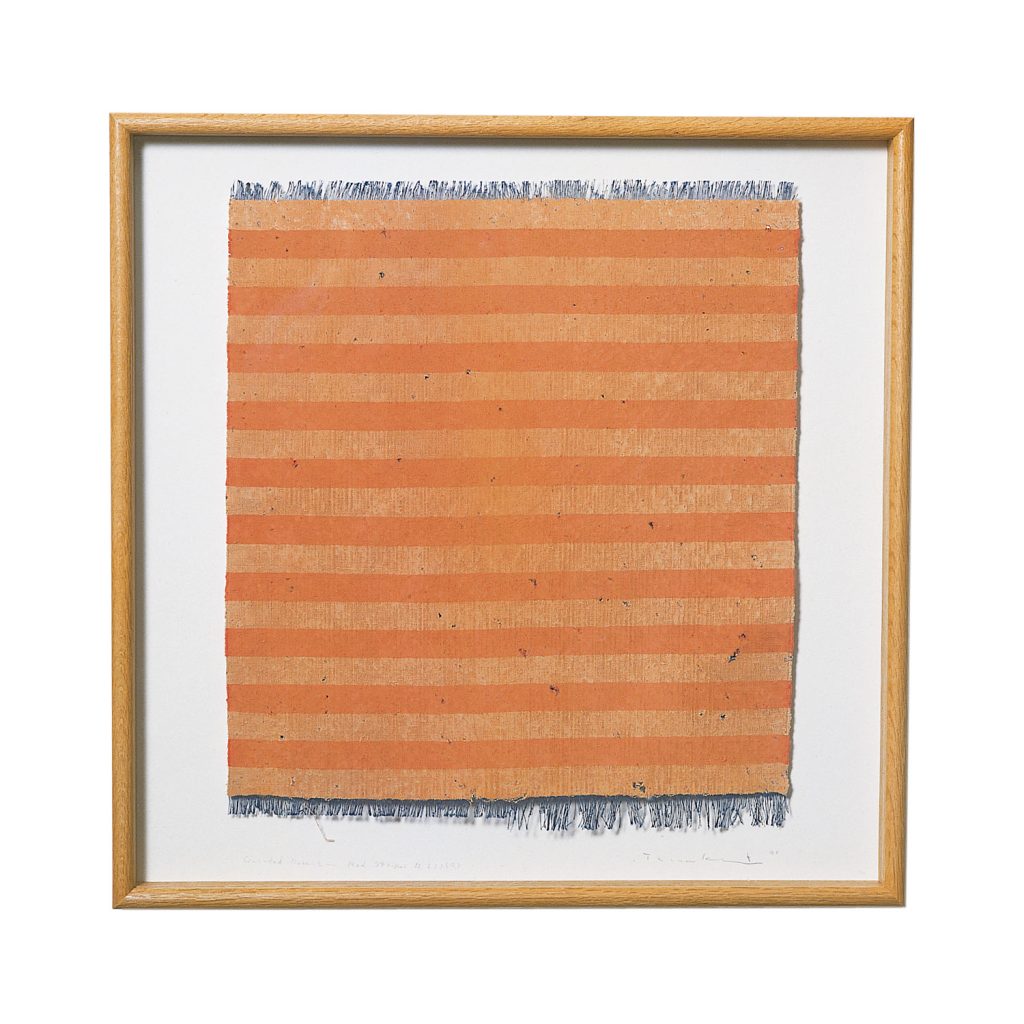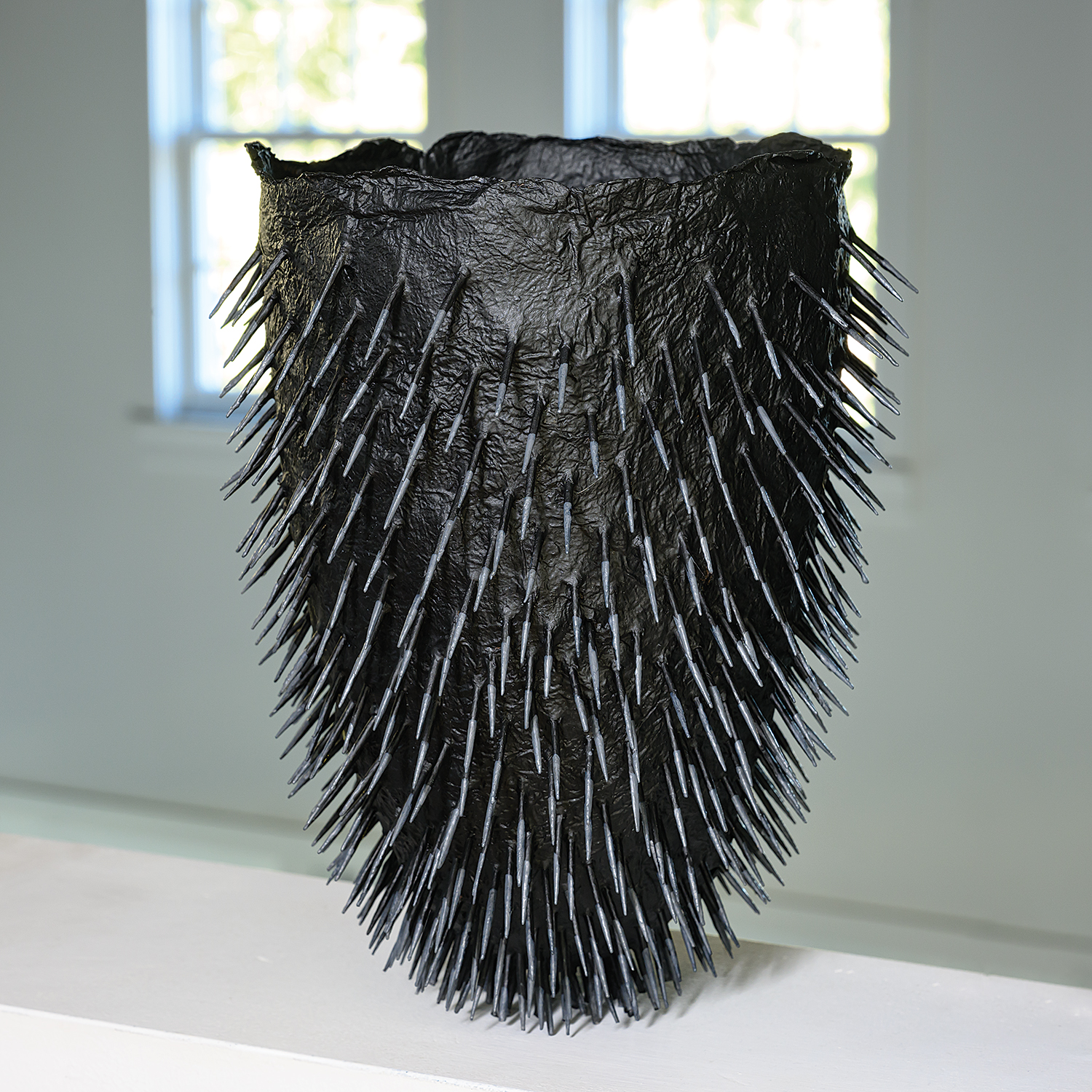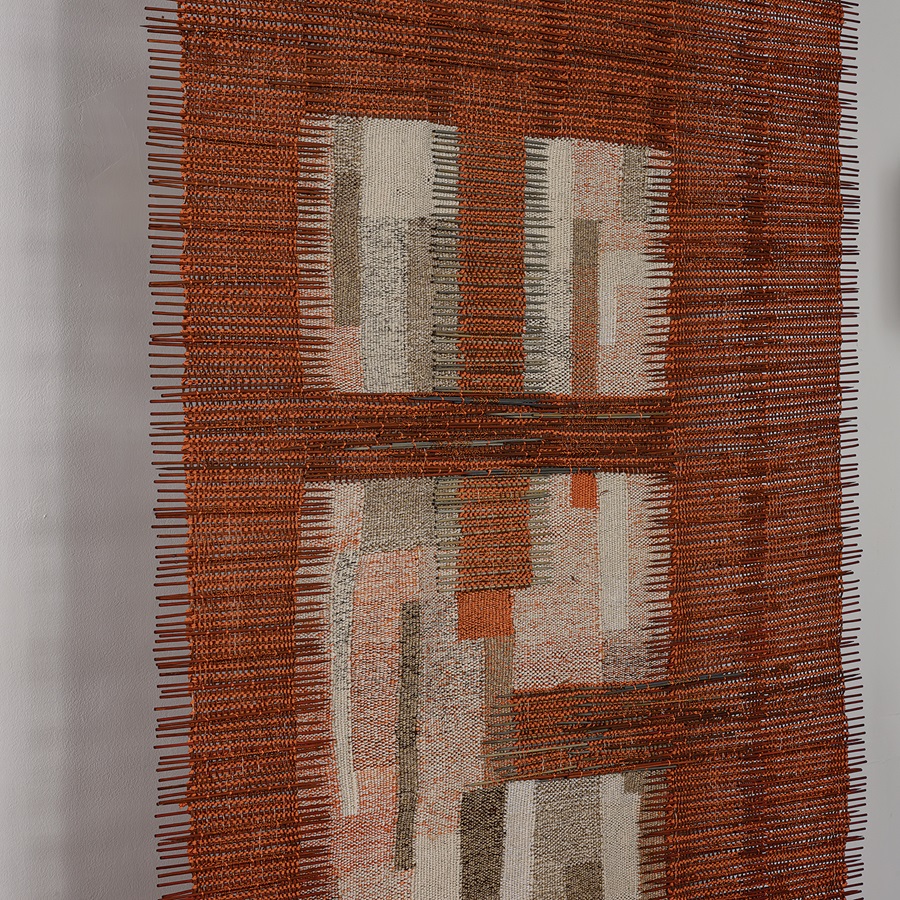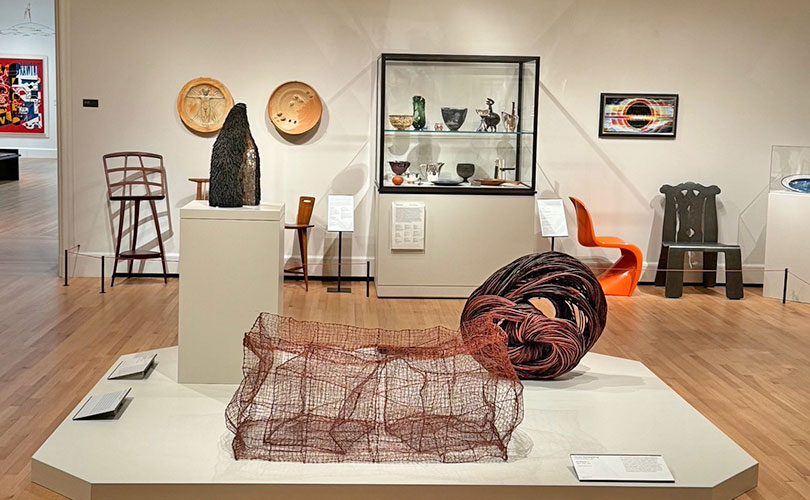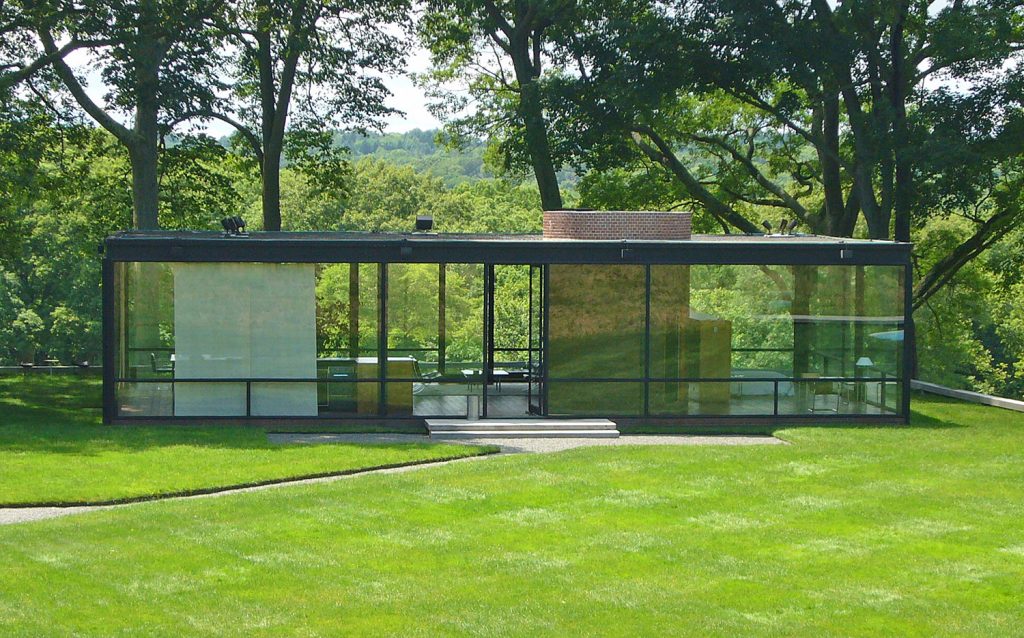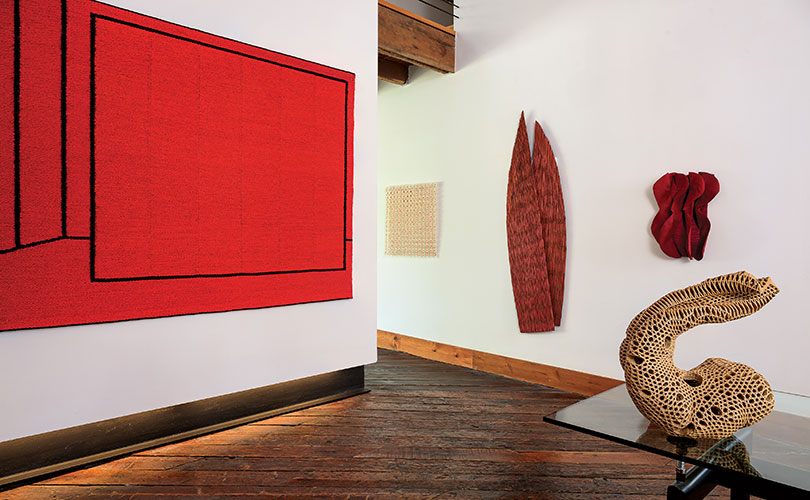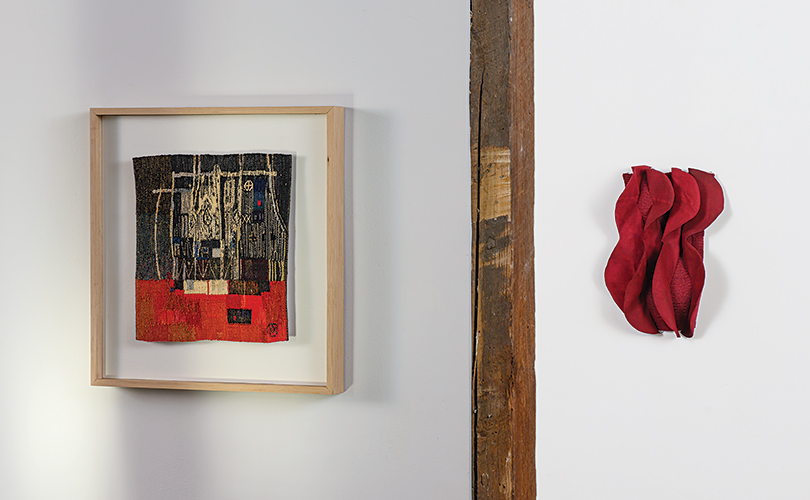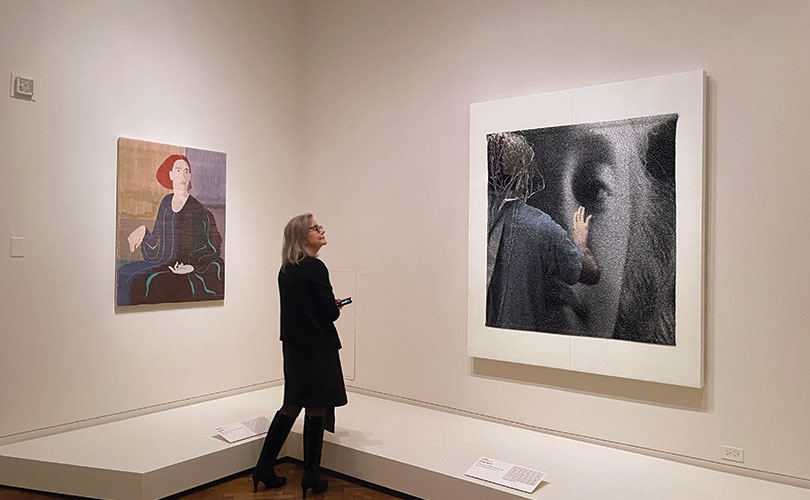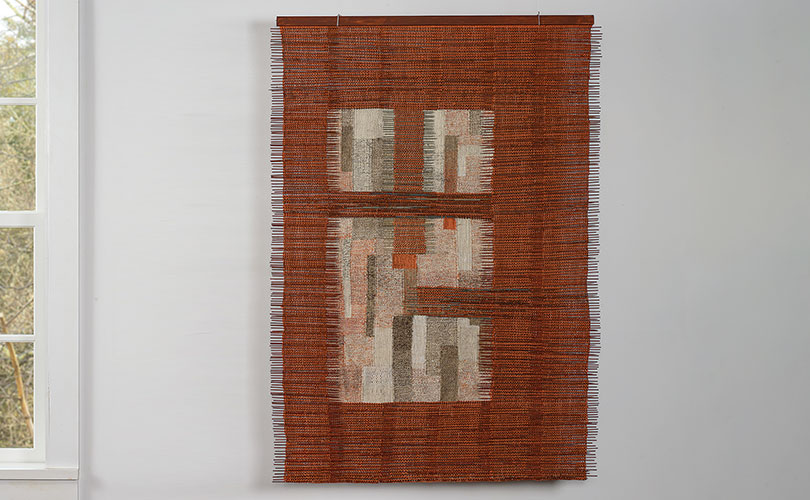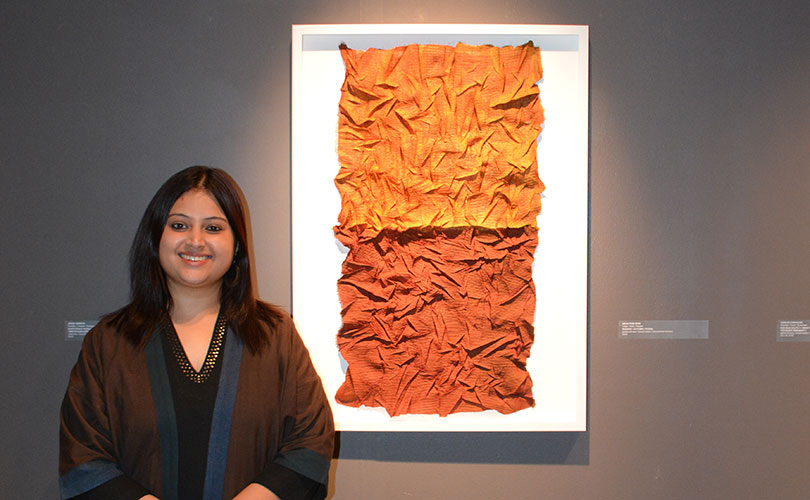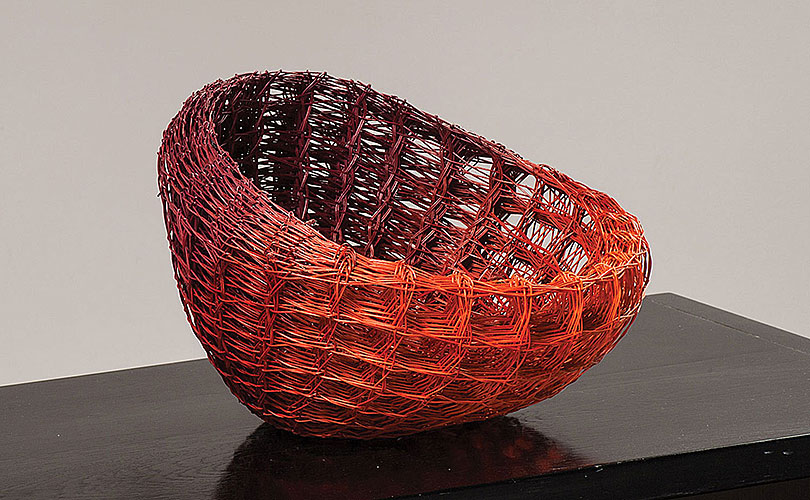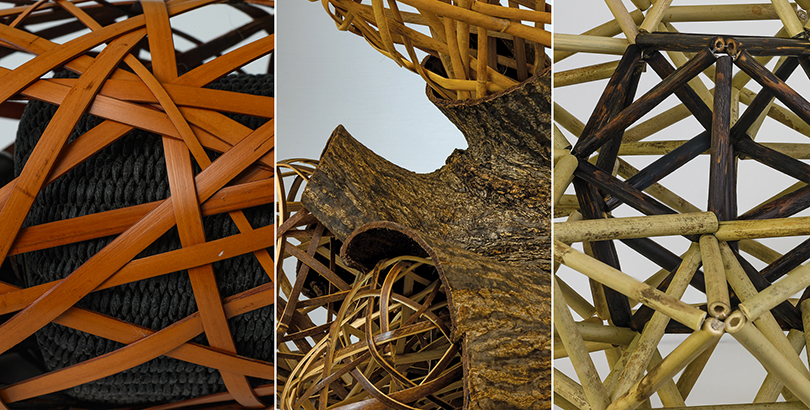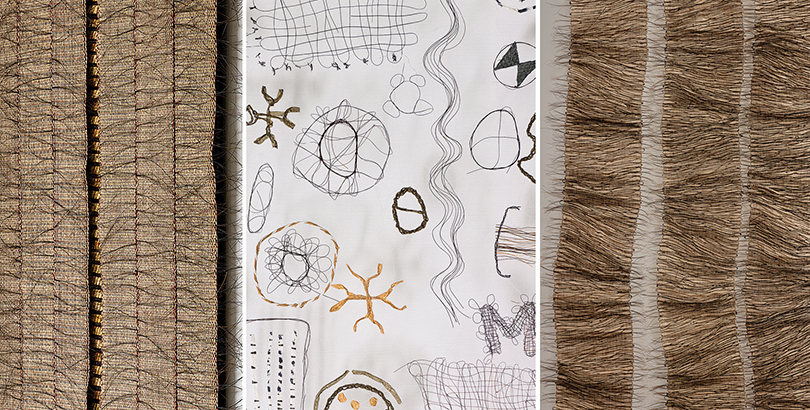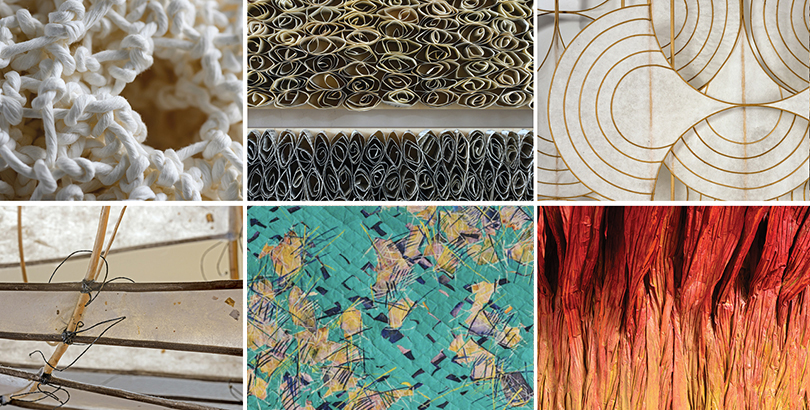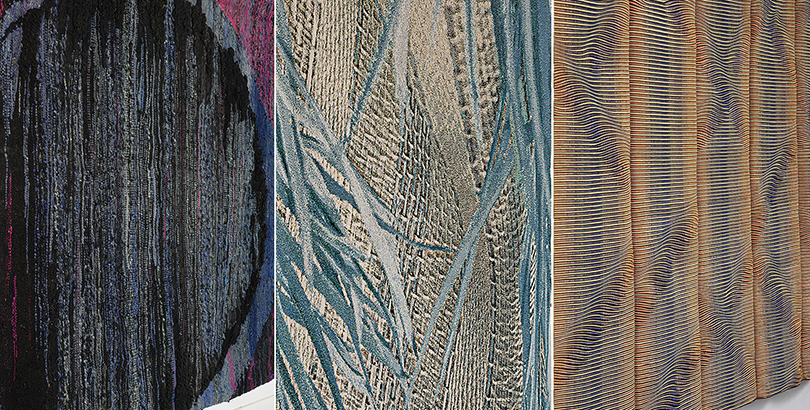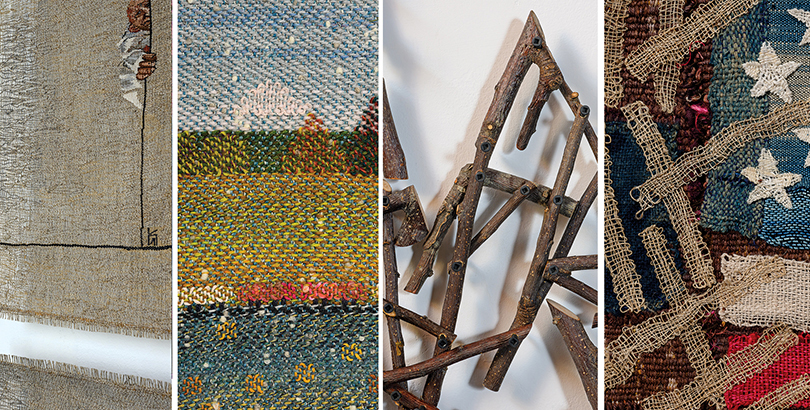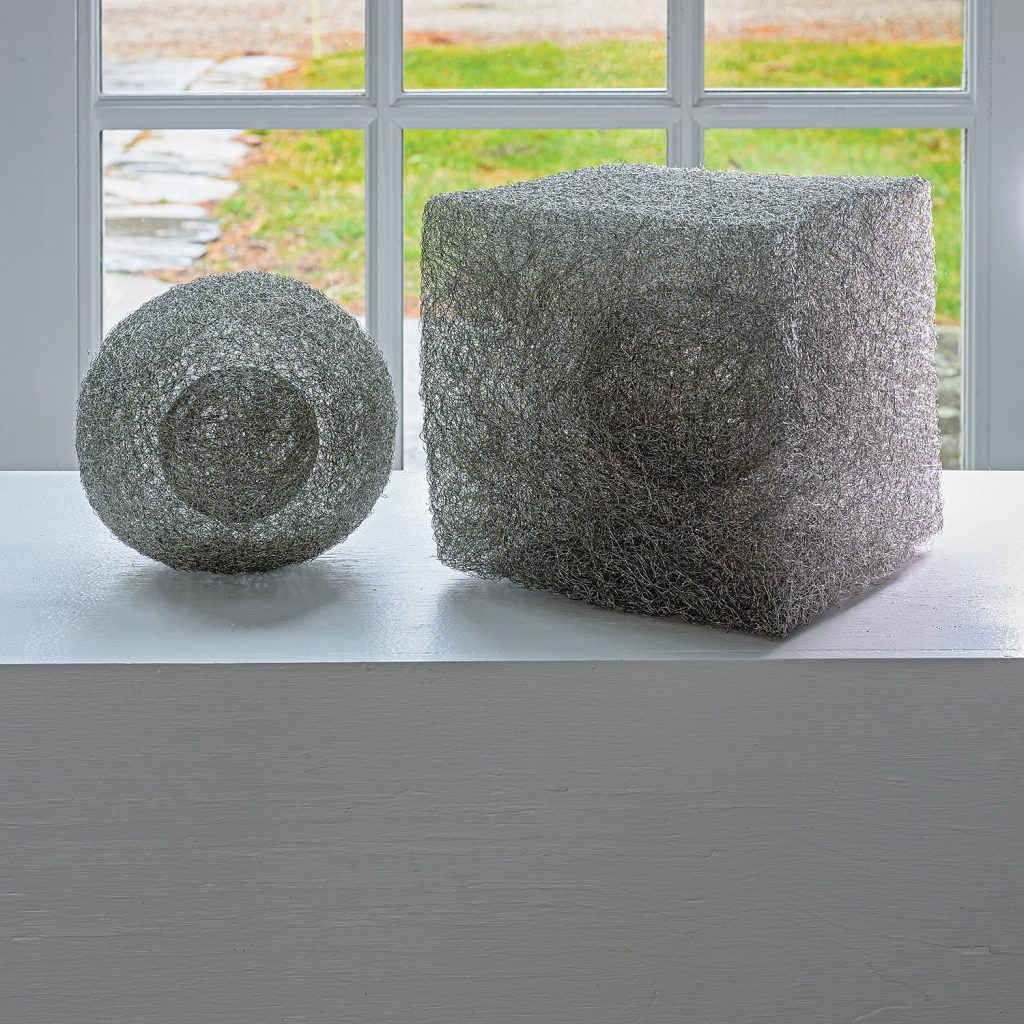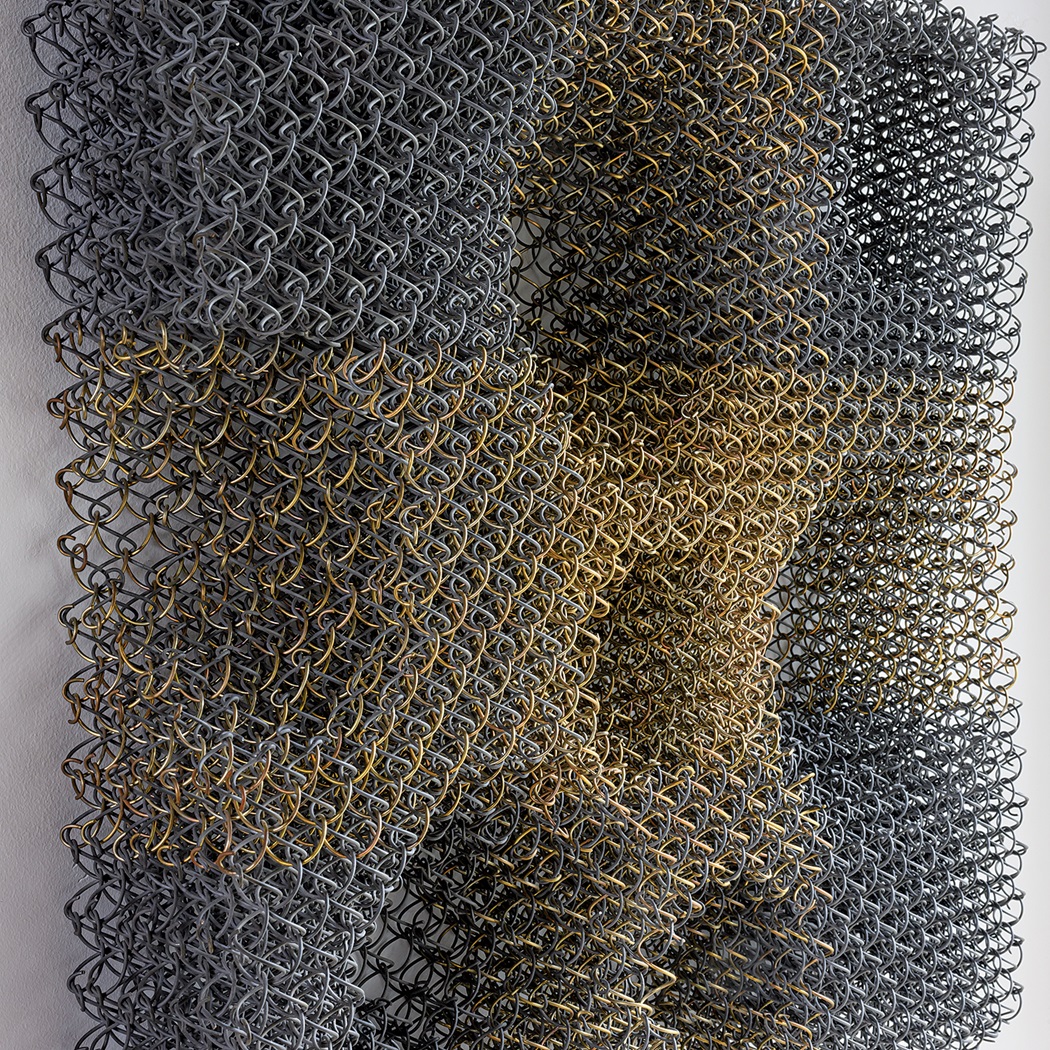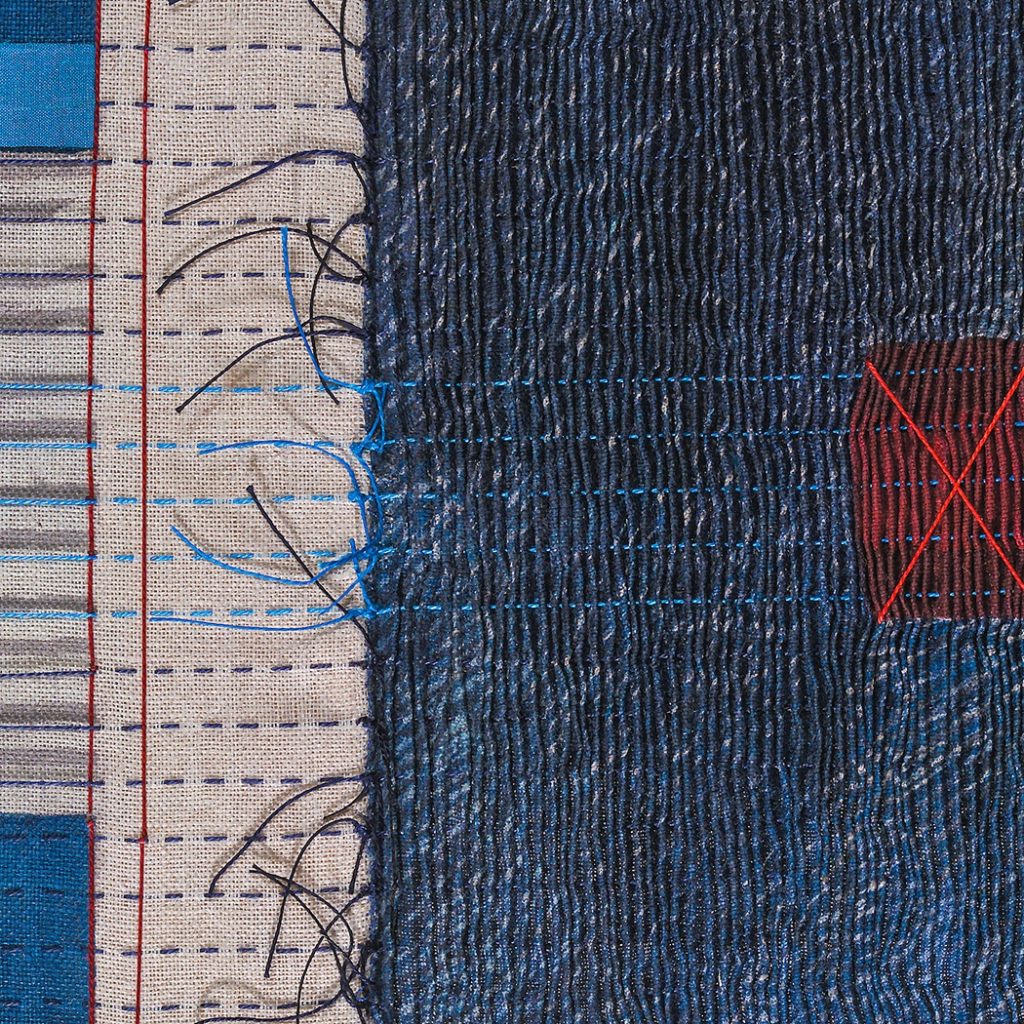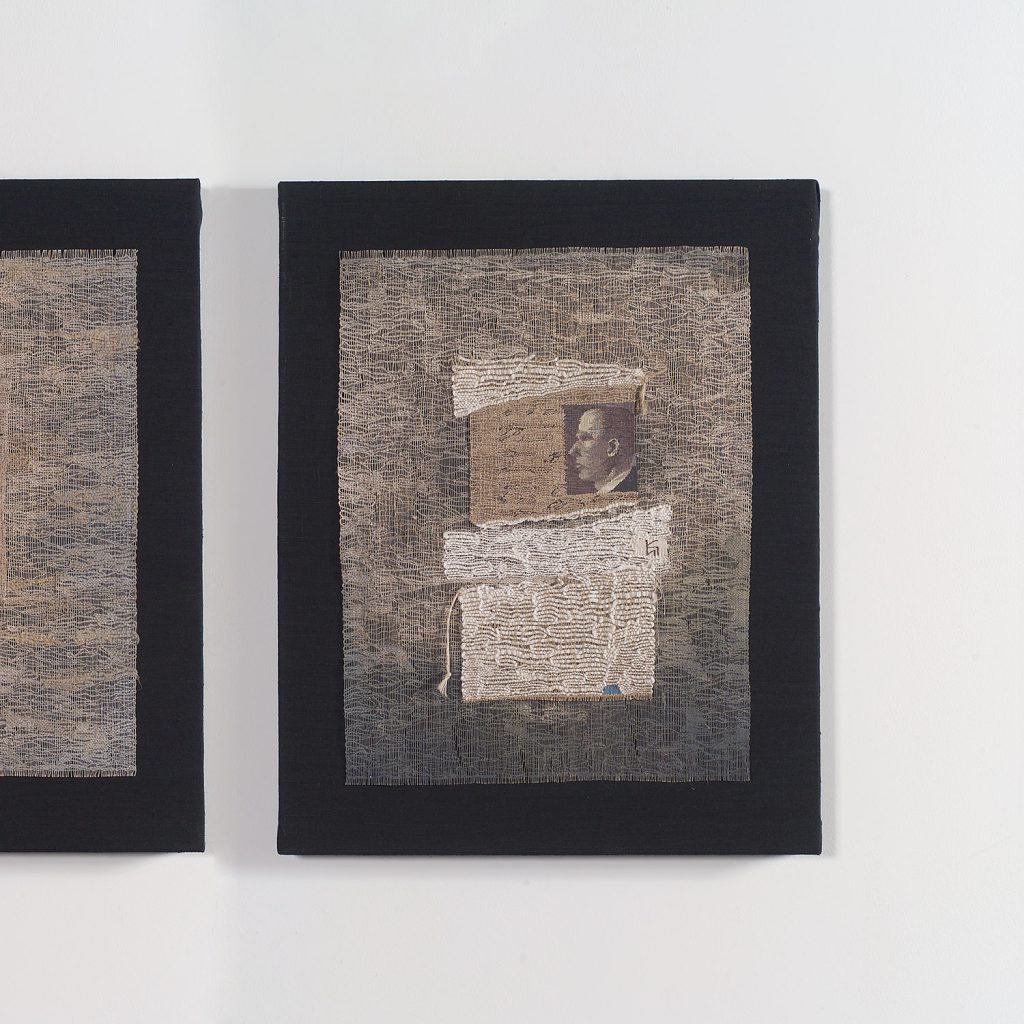For our Spring exhibition, our accomplished chef and close friend Max Fanwick worked up some foods that embodied themes from Discourse: Art Across Generations and Continents. Max’s cuisine is thoughtful and inventive. For Discourse, he looked at themes that emerged as we curated the exhibition and translated them into exciting canapés and desserts. For us it was a treat, to eat and to see our words and thoughts transformed into edible art. Here are some of the highlights — bites paired with the artworks that inspired them. They embody Discourse’s overarching aim to celebrate connections and contrasts.
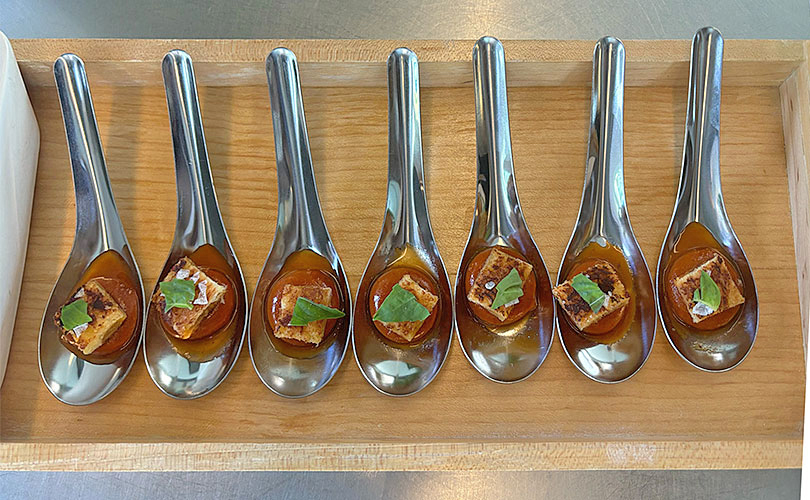
Generational and Geographical Correlations: Tomato Soup Spheres with a Grilled Cheese Crouton
Max’s Musings: Few flavors better resonate across the generations than grilled cheese and tomato soup. This modern take captures all the flavor in modernized bite.
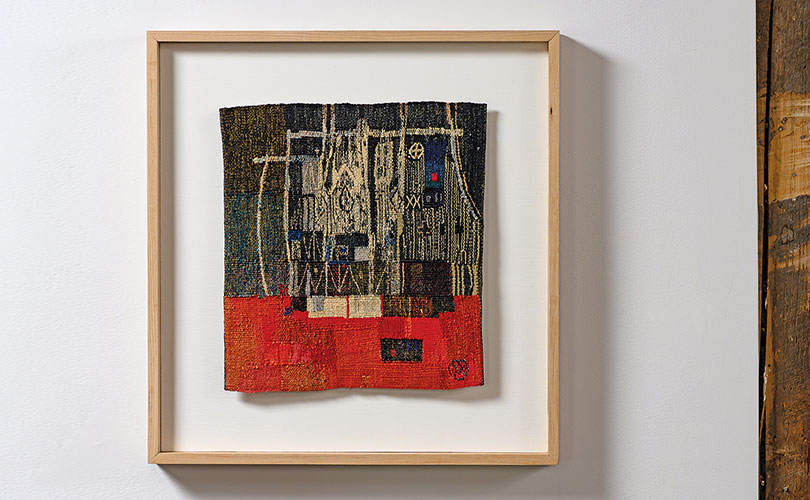
Art Inspiration: Discourse paired work like Nåky Vision II from the 1950s by Margareta Ahlstedt-Willandt of Finland and On Balance by Blair Tate from the US made 70 years later for generational resemblance The exhibition also paired Słońce Szafirowe, (Sapphire Sun) by Zofia Butrymowicz of Poland and Tracking Nasca Patterns by James Bassler of the US for cross-continental comparison.

Structural Explorations: Unstructured Gyoza
Max’s Musings: What makes a dumpling? The shape? The wrapper? The flavor? If you remove the structure, we have all come to recognize what does it become?

Art Inspiration: Perhaps no work in Discourse presented more of a structural mystery than the complex plaiting works by Norie Hatakeyama. Naoko Serino’s ethereal works of jute raised many eyebrows, too.

Reading Between the Lines: Salmon Tartare on Lotus Crisps
Max’s Musings: In Japan lotus root represents good things to come. If you read between these lotus root lines, you will find the good thing to come is salmon tartare.
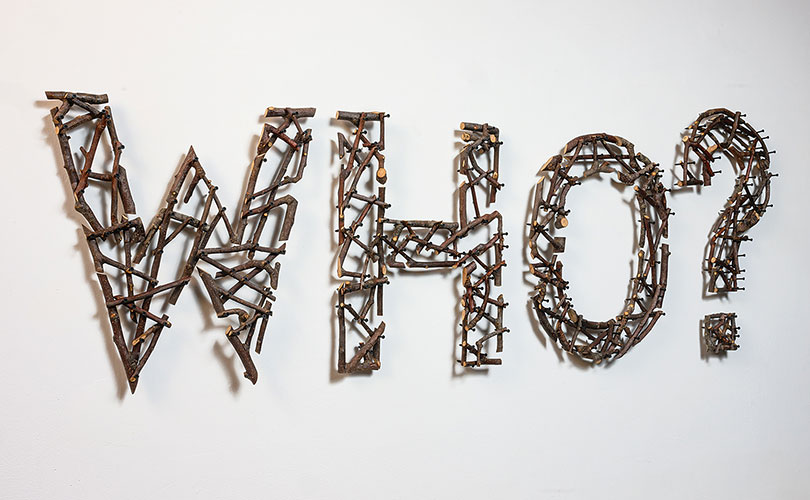
Art Inspiration: There were many messages between the lines in the works in Discourse. In Anticipation, Gyöngy Laky asked “Who?” a question, she says, “that underlies the search for a way forward to a better day.” Laura Foster Nicholson reflects on man’s role in the environment, in Rural Road, Freight Train which depicts a train slicing through the Midwestern landscape.

Weaving Emotion into Art: Filo Threads Woven into Cheesecake Bites
Max’s Musings: This take on baklava cheesecake creates a nostalgic flavor profile known to make people so emotional they will make a special journey just for a bite.
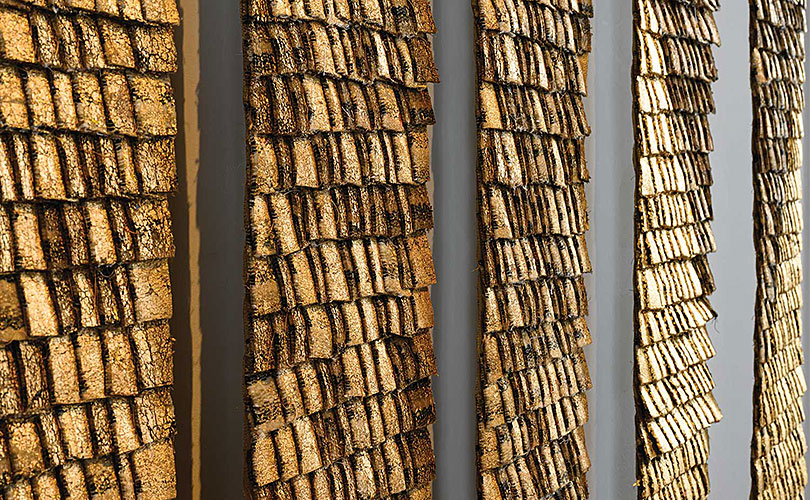
Art Inspiration: Works in Discourse often provoked viewers on an emotional level. Our engagement with fiber art is deeply personal. Our first memories are of cloth — fuzzy blankets, soft towels — and they remain strong ones. Aby Mackie sources and recycles used clothing and linens from flea markets in Spain, fabrics laden with memory. She gilds this repurposed material in works like We Can All Be Saved 13, asking viewers to consider what creates value.

Technical Departures: Flaming Ice Cream
Max’s Musings: Ice cream in a chocolate crust is lit on fire which is as big a technical departure as we could fit into one bite.

Art Inspiration: Discourse also highlights the wide range of technical innovations and experiments that fiber art has featured since its inception, including work by several artists who make vastly different uses of paper. Scrolling of encyclopedia pages by Wendy Wahl from the US, knotted paper objects by Shoko Fukuda of Japan, sculptural works of rice paper by Pat Campbell and paper cord by Mary Merkel-Hess from the US, and woven paper patchworks by Eva Vargö of Sweden were all included.
The diversity of the works in Discourse made for an engaging exhibition. Max’s Musings were an inspired interpretation.
You can find the works in Discourse exhibition on Artsy and you can purchase a full-color catalog at browngrotta.com.


